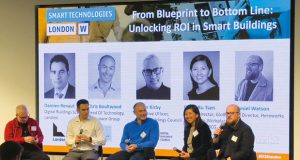FM needs to wake up to the true value of building information modelling, argues Lee Ramsey, Design Management and BIM Director at Morgan Sindall Construction
Digital construction has become an integral part of the built environment. However, many facilities managers have yet to fully realise the potential benefits of its implementation across the project lifecycle. This must change if the FM sector is to fully benefit from the significant advantages offered by the technology and new way of working.
Morgan Sindall Construction has developed a digital toolkit (see References, note 1) designed to help local authorities, universities and developers optimise their construction plans in line with the government’s Construction 2025 strategy (2). The strategy aims to facilitate lower construction costs, faster delivery and reduced emissions.
Design is probably the first thing that comes to mind when considering the use of digital construction. While virtual reality goggles and 3D modelling are integral to digital construction, it’s also about the management of information at each stage and creating digital and built assets that allow buildings to flourish long after the project has completed. Treating the build and operate stages as an afterthought is detrimental to a successful outcome. The most efficiently run buildings use digital construction to provide the client with valuable asset data, minimising spend on maintenance and other operational costs.
 Digital construction creates a simplified process for facilities and operations management teams by combining all relevant pieces of project data into a single platform. At the end of the build stage, contractors can hand over both the physical asset and digital copy to the client. Within this digital twin will be an information goldmine, relaying operational instructions, repair and maintenance schedules, component life expectancies and other information about the elements incorporated within the asset.
Digital construction creates a simplified process for facilities and operations management teams by combining all relevant pieces of project data into a single platform. At the end of the build stage, contractors can hand over both the physical asset and digital copy to the client. Within this digital twin will be an information goldmine, relaying operational instructions, repair and maintenance schedules, component life expectancies and other information about the elements incorporated within the asset.
ASSET DATA
We spoke to many FM customers to better understand the role of digital construction. It became clear that many of the benefits are realised during the operational phase. One respondent said: “The asset information platform is of great benefit to me and my team in running the building. All the information is readily available, and the speed at which the information can be extracted is head and shoulders quicker than the existing manuals.”
Another commented: “Better data on the assets allow you to run the building more effectively through its whole lifecycle – even down to how you would demolish it.” A facilities manager told us that: “BIM provides greater certainty on our contracts. So, for example, we know how much glass a window cleaner has to clean and we know how much grass the groundsman has to cut.”
However, our respondents also reflected on the barriers that have to be overcome, with many organisations noting that the industry has been slow to embrace change. When there is a workforce set in its ways, there can be resistance to new forms of technology. As one participant put it: “Perception [is that] it costs more and slows things down – even though research shows that BIM level 2 saves time and money.”
A common sentiment expressed during our research was that asset data was not being utilised to its full advantage during the briefing stage. Facilities managers and other senior members of a team are often introduced to a project too late to contribute to the design stages, meaning they are left unaware of the benefits digital construction can bring.
It’s not just facilities managers – sometimes senior managers are unaware of the operational benefits of digital construction, and so are not specifying it on their projects. This is one reason for the lack of take-up that is so detrimental to the FM sector.
Our toolkit has been developed in response to this problem. We encourage decisions to be made at the briefing stage of a project or framework, inviting facilities managers to choose from a menu of potential outcomes and benefits. This ensures that key client drivers can be included before the design is developed, and carried through into the construction phase.
Our operational menu not only outlines the benefits of digital construction, but how to access them and inputs required. Clients can be walked through operations and maintenance information, building user guide, training videos and compliance certificates. Information is much more accessible, and can be viewed remotely if required.





